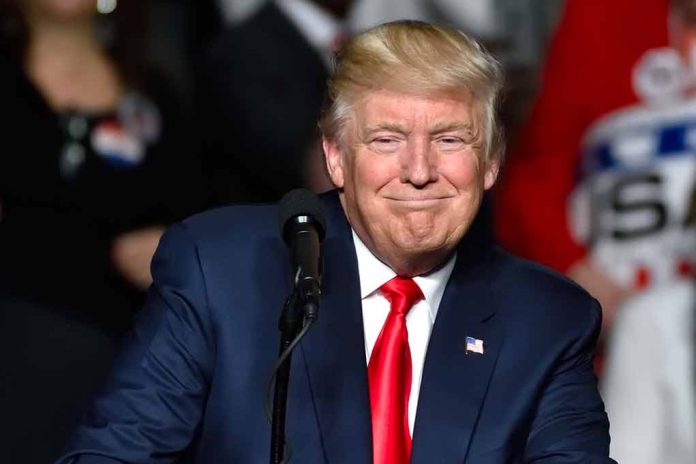
As Trump plans to dismantle the Department of Education, the complexities of achieving such a monumental change loom large.
At a Glance
- Trump intends to abolish the Department of Education and return control to the states.
- Congressional approval with a supermajority is required for such a move.
- The Department of Education has been a Republican target since 1979.
- Previous efforts to dismantle the department have faced significant legislative challenges.
Trump’s Ambitious Proposal
President-elect Trump has consistently advocated for dismantling the Department of Education (DOE) to return educational control to the states. This idea aligns with Republican views that the DOE represents federal overreach. However, for Trump to follow through, he needs congressional approval, especially a supermajority in the Senate. Legal analysts emphasize the complexity of this undertaking, given the significant legislative hurdles.
Despite past proposals from former presidents like Reagan, the DOE persists, primarily due to the requirements for broad political consensus. Its roles include managing federal financial aid, supporting students with disabilities, and enforcing anti-discrimination laws. The department contributes to less than 10% of public school funding, but its functions impact millions of American students.
Legal and Political Barriers
Removing the Department of Education requires congressional action, including a supermajority of 60 votes in the Senate. Experts point out that Trump, to succeed, would need to gain Democratic support, which appears unlikely. “President Trump does not have the ability to eliminate a federal department. Eliminating it would require congressional action, including a supermajority of 60 votes in the Senate. So, even if Trump can follow through with what he says, he has to pull in some Democrats in the Senate, and that will likely be impossible,” said Andrew Stoltmann.
Even within the Republican party, there could be resistance due to the popularity of programs under the DOE’s supervision. These include civil rights protections and support systems crucial for vulnerable student populations. It is not solely a question of deregulation; it involves reevaluating educational priorities.
Strategic Alternatives
Given the legislative challenges, Trump might opt for strategic appointments within the DOE to minimize its influence. By appointing individuals aligned with his educational philosophy, he could significantly impact the department’s direction without formally dismantling it. Earlier attempts by his administration included proposed budget cuts and altered funding mechanisms, though these were not realized. “He would need 60 votes in the Senate, and the realistic chances of that are virtually zero. Trump‘s best bet is to appoint somebody who will effectively be a figurehead at the Department of Education,” adds Stoltmann.
Furthermore, Trump’s educational agenda is expected to include school choice expansions and potentially creating a new credentialing body for educators. His commitment to promoting parental rights, patriotism, and traditional values in schools aligns with his broader educational vision.
Sources
1. Trump would need congressional approval to dissolve Education Department, experts say
2. Can Trump dismantle the Department of Education? It won’t be easy, experts say









